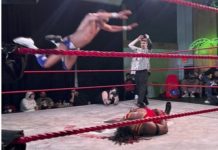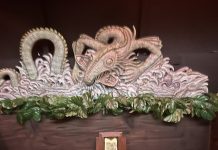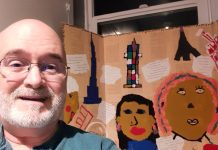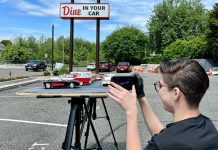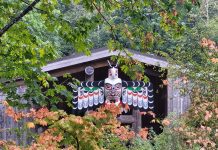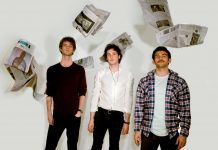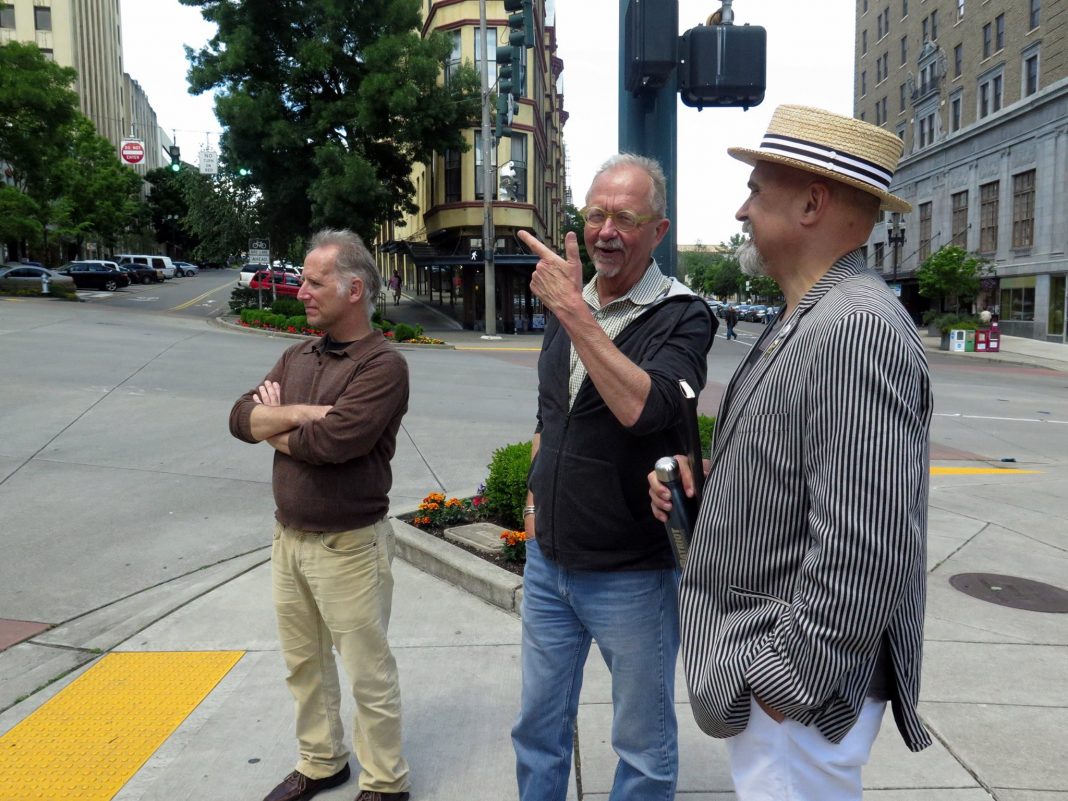Michael Sean Sullivan likes old stuff. He especially loves what stories old buildings, artifacts and snapshots have to tell. He then sets out to tell them.
 “He is the consummate storyteller,” said former mayor Bill Baarsma, who is currently the president of the Tacoma Historical Society. “When I think of Michael Sullivan, I think of Murray Morgan on how he brings Tacoma history alive. He really is of that caliber. He just almost has a magical touch.”
“He is the consummate storyteller,” said former mayor Bill Baarsma, who is currently the president of the Tacoma Historical Society. “When I think of Michael Sullivan, I think of Murray Morgan on how he brings Tacoma history alive. He really is of that caliber. He just almost has a magical touch.”
Baarsma is not the only one to link Sullivan to the late historian, who wrote his history book “Skid Road” while moonlighting as a bridge tender on a bridge span that now bears his name. Sullivan was honored with the historical society’s Murray Morgan Award earlier this year for his decades-long roster of contributions to the preservation and presentation of all things Tacoma history.
“Michael understands the value that history brings to a contemporary community,” local filmmaker Mick Flaaen said. “His passion and dedication to writing and relaying story renders strength for modern communal sensibilities.”
Sullivan’s drive for history and storytelling has aided in the preservation of the Blue Mouse Theatre, where he is part owner. He’s also played a role in the preservation of countless buildings and the recent restoration of the once-thought-lost film “Eyes of the Totem” that re-premiered earlier this summer to mark its 90th birthday alongside Flaaen’s documentary, “A Totem Tale,” about the rediscovery and restoration of the film shot in Tacoma during the era before Hollywood.
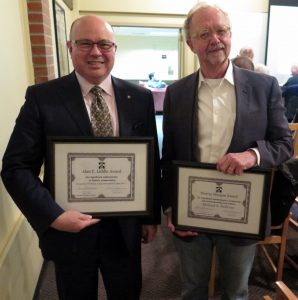
Sullivan has been practicing and teaching historic preservation for three decades and has been at the forefront of local preservation issues, policies and projects either as a volunteer, instructor or as a principal of Artifacts Consulting. He is also a past president of the Washington Trust for Historic Preservation and serves as an advisor to the National Trust for Historic Preservation, a board member of HistoryLink, and as a contributor to RecapturedCity.com, a website that blends historical images with present-day photographs.
Suffice it to say that it only seems fitting that the reigning “Mr. Tacoma History” is a true Tacoman, even though he wasn’t raised here. He was born in Seattle and spent his early years in Spokane and then Oregon and Texas as his father shuttled the family from city to city setting up dry cleaning businesses. Sullivan had his sights on a movie career and attended film school at UCLA.
But that was not to be.
He spent a year in school before leaving UCLA to tour Europe since several of his friends had left America during the Vietnam-era draft and had settled in Spain. Sullivan saw the opportunity to see the world while couch hopping between friends.
“I worked a lot of odd jobs, picking grapes, working at restaurants,” he said.
Sullivan found himself visiting the great museums and historical places of Europe since admission was free and he had little money to spend. He returned to the United States with an interest in history. He got an associate degree from Grays Harbor College followed by bachelor’s and master’s degrees in history from Western Washington University in Bellingham.
“I just loved my history classes there,” Sullivan said.
His love of history became a full-on passion when he spent a summer doing a cultural inventory of remote sites along Alaska’s Forty-Mile River, a tributary of the more famous Yukon River and the location of a gold rush in the 1880s. The river remained untouched after the prospectors left. Sullivan would be helicoptered to a site and stocked with 10 days of supplies then float down the river, mapping and cataloging sites along the way.
“How cool is that?” Sullivan asked. “That just locked me in.”
One moment stands out. It happened in an otherwise unremarkable cabin along the river.
“We went into one place where the permafrost had pinned the door closed,” Sullivan said, noting that the team spent two hours digging out enough snow and ice to create a cave large enough to reach the door.
They entered.
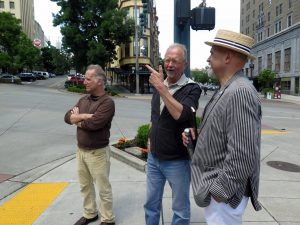
A copy of the book “How Green Was My Valley” rested on a table. It was as if the former occupant had gotten up from his reading mid-paragraph and never returned.
“The book was sitting face down with a pair of glasses sitting beside it. The wind made the chair rock back and forth,” Sullivan said.
That stint in Alaska led to Sullivan gaining a doctoral degree in history from the University of Washington, while he taught historical preservation at Western as the state neared its centennial year in 1989 with a flood of funding for historical projects. Sullivan worked on the heritage inventory of Whatcom County before coming to Tacoma to be the city’s historical preservation officer.
“I was blessed. I really came in at the right time,” he said. “Historical preservation was just becoming a significant part of city government.”
The University of Washington Tacoma was primed to renovate the city’s tired and abandoned warehouse district into a modern urban campus. The Pantages Theater was being renovated. Developers and business boosters, however, had their sights on tearing down historic buildings along Pacific Avenue between 13th and 15th Streets. The historic buildings had been abandoned for decades, ever since the Tacoma Mall gutted downtown’s business district in the 1970s. Sullivan made the case to the City Council at that time to deny the demolition permits because of the historical significance of the buildings.
He lost.
The block was reduced to rubble in two days. Development plans for the site later died as well. The process would repeat itself time and again as the city tried to reinvigorate downtown under the umbrella that became known as the “Tacoma Renaissance.”
“Buildings were torn down for redevelopment, but nothing was being redeveloped,” Sullivan said. “So, they got turned into surface parking lots but no one wanted to park.”
But momentum was building against the idea that Tacoma’s historical sites were disappearing in the name of progress only to have those plans fizzle out shortly after the landmarks were removed.
“People started saying that Union Station was next,” Sullivan said. “People started saying that this is not the direction they wanted to city to go.”
“Save Our Station” formed with notable members, including the late Dawn Lucien and Congressman Norm Dicks, a lawmaker known as “the Bull” for his reputation of getting things done.
Union Station was saved and renovated to serve as a federal courthouse. The Washington State History Museum was later built to mirror its design.
“Suddenly, history was starting to catch on,” Sullivan said.
The Pantages added a second stage to house the now-defunct Tacoma Actors Guild, the historic Ted Brown building was renovated to become the School of the Arts. The Pythian Temple housed the now-dissolved African American Museum in its Court C retail space.
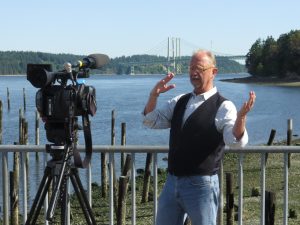
“Things like that started happening and people were showing up downtown,” Sullivan said.
The tide had turned. Old buildings were finding new life rather than being torn down as eyesores to make way for some undefined new use at some future date.
“Everything else had been tried and didn’t work, so they were really willing to take a risk,” Sullivan said. They would rather have someone blowing glass in a building than just leave it to the pigeons.”
Proof of that risk-taking centered on Albers Mill, which had sat vacant for generations. It was converted to high-end residential units right next to the newly opened Museum of Glass, against the opinions of Tacoma’s business icons.
“With Albers Mill, the idea came out that this was really working,” Sullivan said.
Eyes turned to other long-vacant buildings for redevelopment. Their ages were seen as assets to save rather than liabilities to remove.
“There is something arrogant about tearing something down just because you are too lazy to fix it,” Sullivan said. “I don’t want to get too philosophical about it, but I believe every city has a personality.”
That personality can be found in its buildings, and it’s a personality of accommodating waves of immigrants and turning the collective history of the city into the shared heritage of its residents. Proof of that comes from the comments found under Sullivan’s historical blog, an effort he started seven years ago to not only document the city’s past but to boost interest in preservation by sharing bite-sized articles and a handful of photographs about specific points in history rather than investing time in a multi-chapter book.
“There is a deep enough history in the articles that all you have to do is start the story, just give them a nugget and they will finish it themselves,” Sullivan said. “They are finishing their own book.”













